New Australovenator hind limb elements pertaining to the holotype reveal the most complete Neovenatorid leg
- PMID: 23894328
- PMCID: PMC3722220
- DOI: 10.1371/journal.pone.0068649
New Australovenator hind limb elements pertaining to the holotype reveal the most complete Neovenatorid leg
Abstract
We report new skeletal elements pertaining to the same individual which represents the holotype of Australovenator wintonensis, from the 'Matilda Site' in the Winton Formation (Upper Cretaceous) of western Queensland. The discovery of these new elements means that the hind limb of Australovenator is now the most completely understood hind limb among Neovenatoridae. The new hind limb elements include: the left fibula; left metatarsal IV; left pedal phalanges I-2, II-1, III-4, IV-2, IV-3; and right pedal phalanges, II-2 and III-1. The detailed descriptions are supported with three dimensional figures. These coupled with the completeness of the hind limb will increase the utility of Australovenator in comparisons with less complete neovenatorid genera. These specimens and the previously described hind limb elements of Australovenator are compared with other theropods classified as neovenatorids (including Neovenator, Chilantaisaurus, Fukuiraptor, Orkoraptor and Megaraptor). Hind limb length proportion comparisons indicate that the smaller neovenatorids Australovenator and Fukuiraptor possess more elongate and gracile hind limb elements than the larger Neovenator and Chilantaisaurus. Greater stride lengths to body size exist in both Fukuiraptor and Australovenator with the femur discovered to be proportionally shorter the rest of the hind limb length. Additionally Australovenator is identified as possessing the most elongate metatarsus. The metatarsus morphology varies with body size. The larger neoventorids possess a metatarsus with greater width but shorter length compared to smaller forms.
Conflict of interest statement
Figures


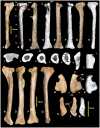
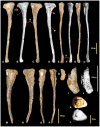






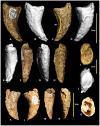



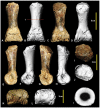

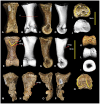






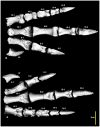


References
-
- Bryan SE, Cook AG, Allen CM, Siegel C, Purdy DJ, et al. (2012) Early – mid Cretaceous tetonic evolution of eastern Gondwana: From silicic LIP to continental rupture. Episodes Special Issue, Oceania Geology 35(1): 142–152.
-
- White MA, Falkingham PL, Cook AG, Hocknull SA, Elliott DA (2013) Morphological comparisons of metacarpal I for Australovenator wintonensis and Rapator ornitholestoides: implications for their taxonomic relationships. Alcheringa 37: 1–7.
-
- Dettmann ME, Clifford HT (2000) Gemmae of the Marchantiales from the Winton Formation (mid-Cretaceous), Eromanga Basin, Queensland. Memoirs of the Queensland Museum 45: 285–292.
-
- McLoughlin S, Drinnan AN, Rozefelds AC (1995) A Cenomanian flora from the Winton Formation, Eromanga Basin, Queensland, Australia. Memoirs of the Queensland Museum 38: 273–313.
Publication types
MeSH terms
LinkOut - more resources
Full Text Sources
Other Literature Sources

